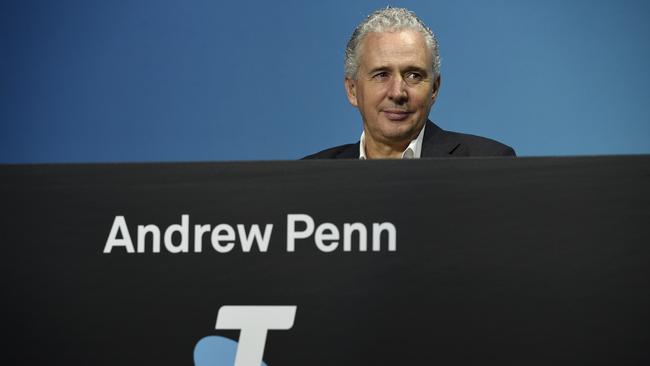
The increase also applies to staff in Telstra’s infrastructure business and has given the telco confidence that it will be able to manage the impact of inflation, which is running at 6.1 per cent and is expected to push higher well into the next year.

The agreement, covering the bulk of Telstra’s 17,000 workers, also marks one of the first big enterprise deals that entrenches hybrid working – that is working from home – into a formal workplace document.
Requests from employees to divide their time working between home and the office will only be refused on reasonable business grounds, the enterprise deal says. Telstra workers have been offered additional leave, including 20 days domestic violence leave and the telco has also included “gender affirmation” leave into the agreement.
But the pay deal shows relative restraint with a wages breakout now looming as the biggest test for inflation.
On the heels of the skills summit, National Australia Bank last week outlined a staff proposal for an enterprise agreement which sees an offer of 5 per cent for the first year and 4 per cent a year later for staffers earning below $100,000. For more senior workers an offer of 4.5 per cent for year one and 3.5 per cent for the second year has been pitched.
The NAB proposal pushes back on Finance Sector Union demands for an across-the-board 6 per cent rise and the lender is now hopeful of securing direct support from its staff for the offer. NAB is also proposing an extra week of paid leave for workers who have used up all their leave entitlements in a single year.

This is being closely watched by other banks with Westpac’s offer of up to 4 per cent rejected by staff and ANZ’s staff operating under a 2015 agreement, although it has requested a meeting with the union over pay.
ANZ chairman Paul O’Sullivan recently told The Australian that businesses have a major role to play in curbing inflation through the economy by investing alongside employees to ensure productivity is also rising during this high wage environment.
With unemployment pushing multi-decade lows, the power over pay is swinging back to workers. But it is not all being distributed evenly. Workplaces such as Telstra that are undergoing massive structural change are finding they are tempering wage claims even in a hot market.
Penn’s multi-year Telstra 22 program included 8000 job cuts, representing nearly a third of the telco’s workforce. The targeted $2.7bn in savings from the massive retooling program will be delivered by June next year. In addition another $500m of savings will be sought within the next three years under new chief executive Vicki Brady.
Before he left last month, Penn said the enterprise deal gave Telstra some protection for the next two years against a wages-led inflation spiral. Although there are additional wages pressure coming from the high demand for software engineering workers.
Network sharing
A cache of documents released by the competition regulator as it weighs up whether to approve a mobile network sharing deal between TPG/Vodafone and Telstra in regional Australia and across the urban fringes reveals former Telstra boss Andy Penn’s motivation for the potentially risky transaction.
In an 154-page affidavit including supporting documents, Penn says the idea came about in late 2020 when TPG declared publicly that it planned to accelerate the rollout of 5G services. Penn says his chief information officer Nikos Katinakis initially saw the comments as an opening to share infrastructure, and had seen network sharing deals in place in India and Canada where he worked previously.

Ironically, Penn says mobile spectrum limits imposed on the telco giant during earlier auctions to promote competition in regional Australia had paved the way for the network sharing deal.
It is these spectrum limits that are likely to come under scrutiny by the competition regulator as Penn said his belief was the rule was intended for the auction only.
“My recollection is that the limits were never said to be intended as a permanent limitation on the way that Telstra and others operate or to prevent commercial arrangements with other mobile network operators after the auction,” Penn says in the affidavit.
Penn was personally involved in the talks with TPG boss Iñaki Berroeta right up to the signing of the proposed deal that gives TPG access to 17 per cent of the national population that live in regional Australia.

He argues the deal gives Telstra a revenue stream to better use its mobile network, which would also help it to meet infrastructure costs in regional areas. Also pooling Telstra’s spectrum with TPG’s large holdings of high quality regional spectrum would help deliver increased capacity for customers and overcome network congestion, particularly on the urban fringe. Penn also admitted there were risks to the deal for Telstra including it will “almost certainly” result in Telstra losing market share to TPG, especially in regional areas. The ACCC will release its decision on the deal by December.
Byres’ swan song
One of the last big moves by Wayne Byres, the outgoing head of financial watchdog the Australian Prudential Regulation Authority, has been to get the ball rolling on getting the fundamental rules that govern the banks, super funds and insurers match fit for the digital age.
Like any system where fixes and changes have been constantly made over two decades, prudential rules that all banks must follow are incredibly complex, sprawling and don’t always talk to each other. The highly prescriptive nature also means they can sometimes miss new tech-based business models or more worryingly be blind to emerging banking risks.
There are 140 standards and guides covering the five areas that APRA oversees, banks, superannuation and insurance – life, health and general.
APRA will hold talks with banks and others in coming weeks to get across any “pain points” with the current suite of rules and assess if there is appetite for change.
A key focus on digital and new business models is to make sure the rules are aware of the use of digital technology by banks and insurers. This includes oversight of regtech, language processing, machine learning, artificial intelligence, and blockchain-based distributed ledger technology.

At the same time more complex group structures are emerging, blurring the demarcation lines between regulated and unregulated industries. This is increasingly important for tech giants Apple and Google as they push into payments.
Regulators are also increasingly required to focus on different areas of risk – such as the financial risks from climate change. New products – such as crypto assets and buy now, pay later – are also giving rise to new risks, which APRA believes will need to be carefully managed.
By the end of the process APRA hopes to have better, clearer regulations that are easier to oversee and that have evolved with the financial system.
Rules will be designed to take a “digital first” approach including using technology to supervise regulations.
The program is significant and is set to take years to complete. Byres, who is scheduled to retire as chairman at the end of next month, won’t see the outcome.
• Feedback over Monday’s item about CEOs, bonuses and pay says my reference to a “revolt” among Domino’s Pizza Enterprise executives over pay was too strong. Discussions between the Domino’s board and senior executives took place around pay policy, but these were part of regular talks and I am assured the meetings were civil and pizza was shared. Domino’s is testing its new pay policy with institutional investors and this will be updated shortly.
johnstone@theaustralian.com.au





Thousands of Telstra workers will see the first of their annual pay rises from the end of this month, although some will be looking at what is taking place across at the nation’s major banks wondering if they have left something on the table. The new enterprise agreement, finalised in recent months under former chief executive Andy Penn, delivers a 2.5 per cent pay increase in October, and another 3 per cent in a year’s time.